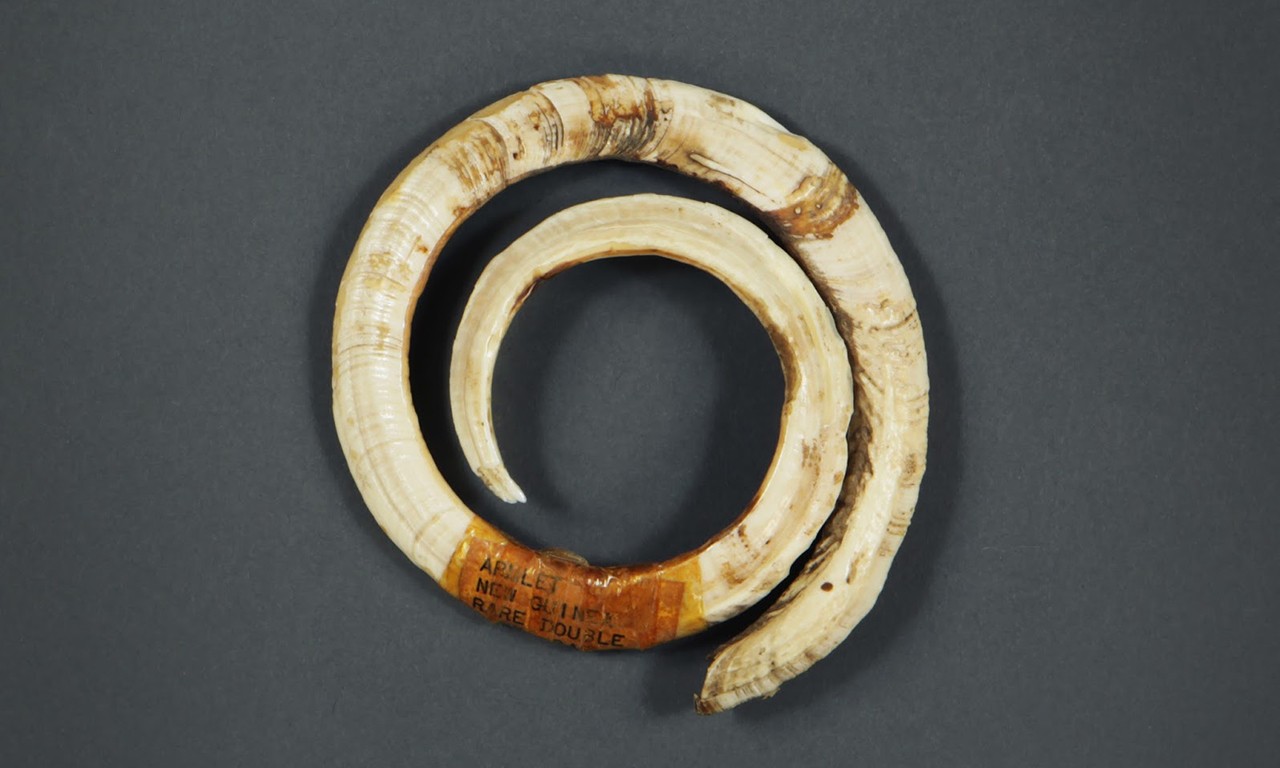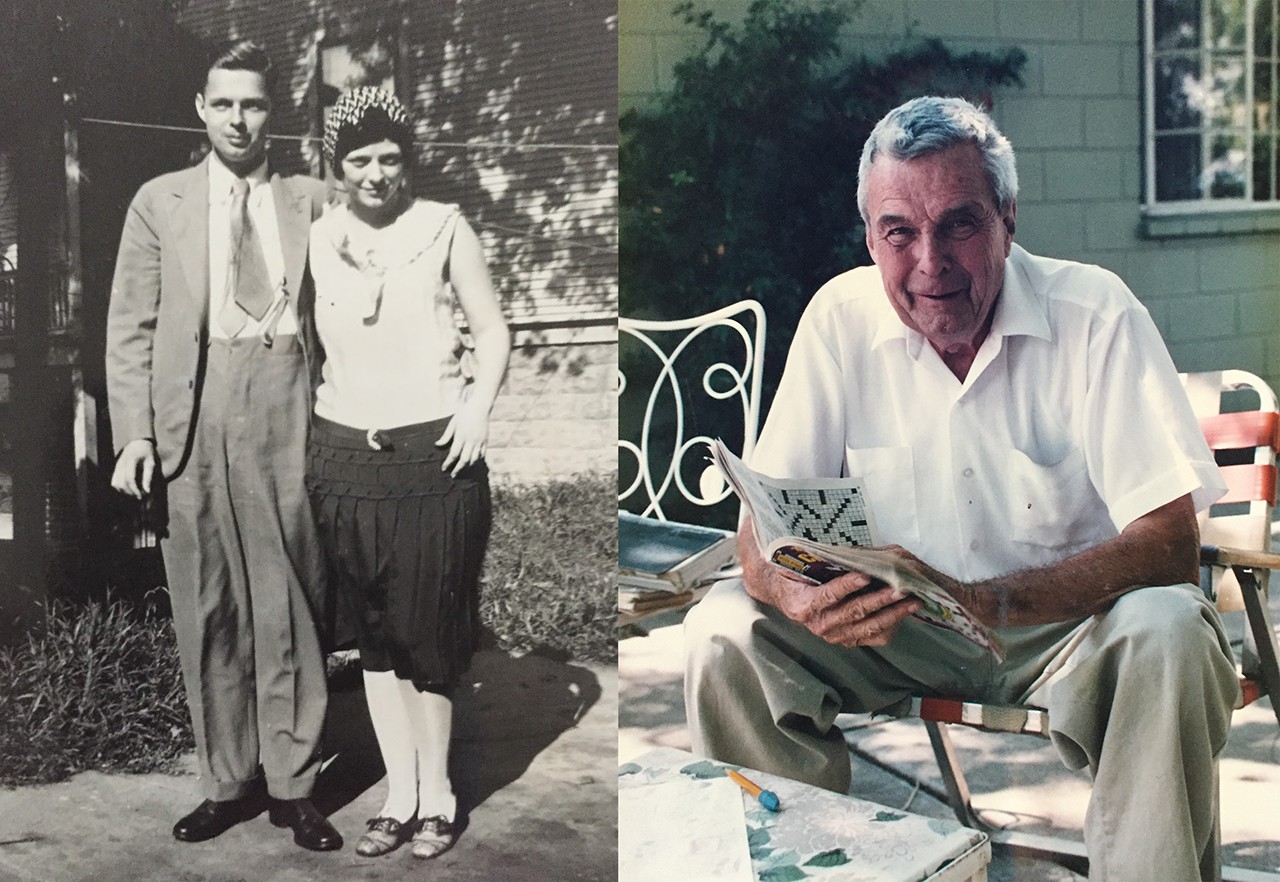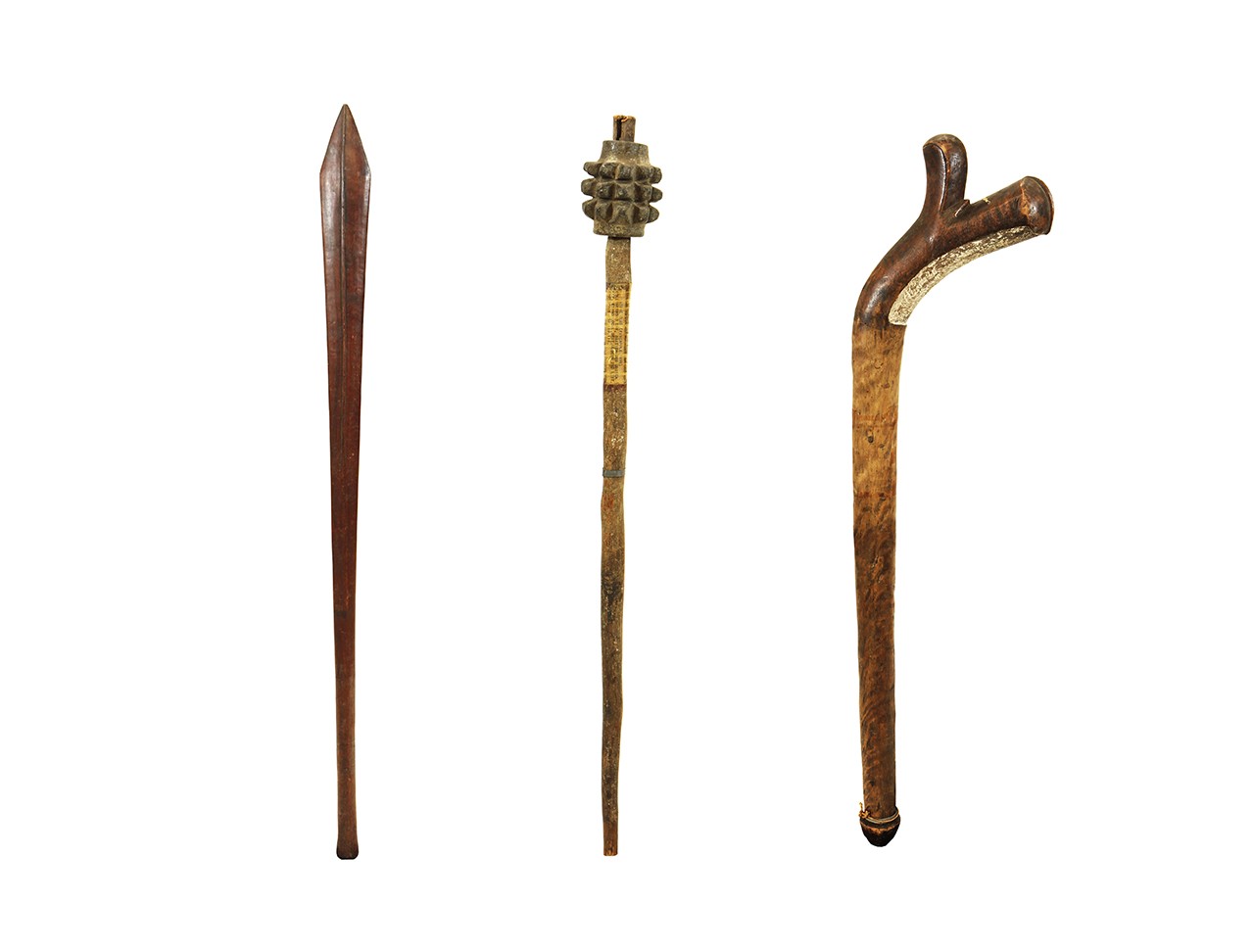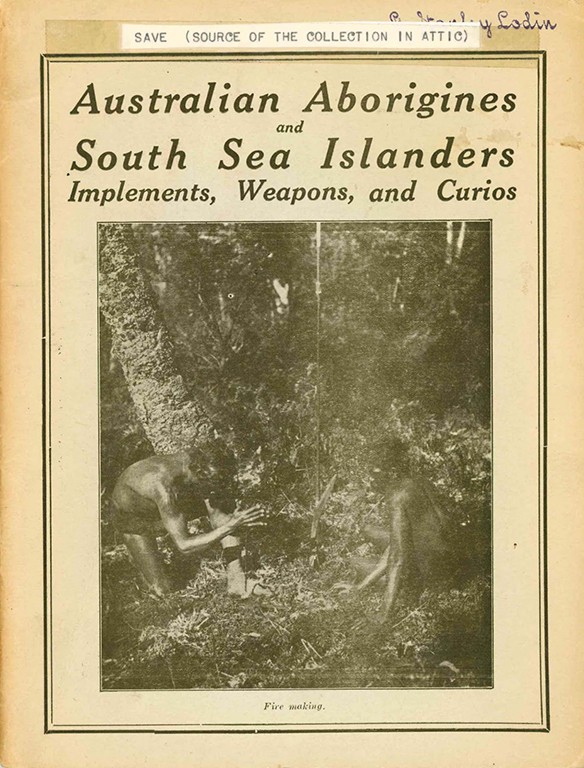 |
Circular Boar's Tusk, mid 19th to early 20th Century
Papua New Guinea, Melanesia
Boar tusk; 4 1/4 x 4/12 x 1/2 in.
2015.17.24
The George Stanley Lodin Collection |
Artifacts Like Parfait, With Layers
Artifacts have layers and layers of stories. While not always told, the stories of previous owners, collectors and lenders are important components of an artifact’s history and presentation. In October of 2015, the Bowers Museum acquired a collection of Oceanic artifacts that is accompanied by a fascinating and important story. As the collection and its history were researched, what unfolded was a history that extended beyond the cultural and global importance of the objects themselves into insights about Western colonization of the Pacific region and the curio industry of the early 20th Century. All of this information stems from the journey of one young man, George Stanley Lodin.
 |
| George and Lenore Lodin, c. 1935 (left) and George Lodin, c. 2010 (right), courtesy of the Lodin Family |
The Lowdown on Lodin
In 1930, a 22 year old George Stanley was sent to Australia for one year at the request of his employer, the Brunswick Radio Corporation. Lodin worked as a radio technician within the Sales Engineering division of the company and was sent abroad to set up a new radio manufacturing facility. Lodin had never before traveled outside of the United States, so he requested that he depart from his home in Omaha, Nebraska and head west to Australia. He then asked to continue his trip around the world once his work responsibilities were complete. While working abroad, Lodin developed a keen interest in the history and culture of Australia. This interest prompted him to purchase a collection of Oceanic artifacts from Tyrrell’s Museum in Sydney. The collection included books, weapons, adornments and tools.
It is at this point that our story takes an intriguing turn. Tyrrell’s Museum was an eclectic curio shop owned by James Tyrrell. Tyrrell originally made a name for himself as bookshop proprietor and publisher. He began to expand his enterprise to include art dealing, a venture which led him to acquire Tost and Rohu Taxidermy, Furriers, Tanners and Island Curio Dealers, a shop he would later report to be “the oddest of the various shops I have had in Sydney.”
 |
Three Clubs, mid 19th to early 20th Century
Solomon Islands, Fiji, and Papua New Guinea
Wood, stone and paint
2015.17.70,.9,.10
The George Stanley Lodin Collection |
Hereditary Taxidermy
Jane Tost and Ada Rohu owned the curio shop. As a renowned mother-daughter taxidermy team, they hailed from a storied family of taxidermists. Both women were also quite accomplished themselves. They received twenty six medals at international exhibitions including the 1893 Chicago World’s Fair. Previous to opening their first shop in 1872, Jane worked as a taxidermist for the British Museum, the Hobart Town Museum and the Australian Museum in Sydney. In fact, she is thought to be the very first woman employed in an Australian museum. She even received the same wage as her husband, fellow taxidermist and cabinet maker Charles Tost.
Tost and Rohu began their taxidermy business as a way to support their family after two relatives were involved in a tragic accident. These intrepid women originally sold stuffed and mounted animals, fancywork goods and glass domes. In 1896, the women were able to expand into a second location. By 1904 their shop included an upstairs museum where patrons could purchase curio items and artifacts from Australia and the Pacific Islands. This shift in goods sold is thought to be attributed to Ada’s second marriage to Henry Rohu, a naturalist and a collector of ethnographic material in his own right.
A Toast for Tost
James Tyrrell formed his working relationship with Tost and Rohu in 1923 and eventually acquired their complete stock of curios and ethnographic material. While Tyrrell originally envisioned owning a floating museum that would move about the Sydney Harbor, he settled on housing his museum in his shop at 143-147 Castlereagh Street. A catalog of his newly acquired stock was published in 1929. The majority of the objects purchased by George Stanley Lodin have entries in this publication, and those that do not are accompanied by original printed sales tags from Tyrrell’s Museum. The catalog is made even more special by Lodin’s diligent annotations that appear throughout the margins.
 |
Australian Aborigines and South Sea Islanders Implements, Weapons, and Curios, 1929
Tyrrell’s Museum; Published by J. Evans Print Co.; Sydney, Australia
Paper and ink; 9 1/2 × 7 1/4 × 1/4 in.
2015.17.1
The George Stanley Lodin Collection |
Exoticising Oceania
The catalog and the labels certainly have the flair associated with the curio industry of the early 20th Century. Words like rare, secret and sacred are used to entice Tyrrell’s clientele, typically tourists or international collectors and curators who participated in his mail order business. The items available for sale at Tyrrell’s Museum were not necessarily representative of the cultures of the Pacific region, particularly because they were collected with a mind to what exactly might appeal to Western buyers. Additionally, many items collected in the field had traditional ties to men and male-specific uses as indigenous males were typically the people who came into contact and did business with European traders and collectors.
Lodin's Spark
Tyrrell shifted his focus back to bookselling in 1935 and closed his museum in Sydney. But, this was not before his shop sparked an interest in Lodin that would last a lifetime. After his whirlwind travels, George Stanley Lodin returned home to the United States and married Lenore McGrath. The pair lived in Rockford, Illinois before moving to Albuquerque, New Mexico in the mid 1950s. Lodin’s collection remained intact at each move and became a beloved representation of his travels as well as special part of the Lodin family’s legacy. The Bowers Museum is quite lucky to have this collection and is grateful to be able to share George Stanley’s story with museum visitors for generations to come.
The Bowers Museum would like to extend a special thanks to the Lodin family for sharing their treasured family history. Text and images may be under copyright. Please contact Collection Department for permission to use. Information subject to change upon further research.





Comments